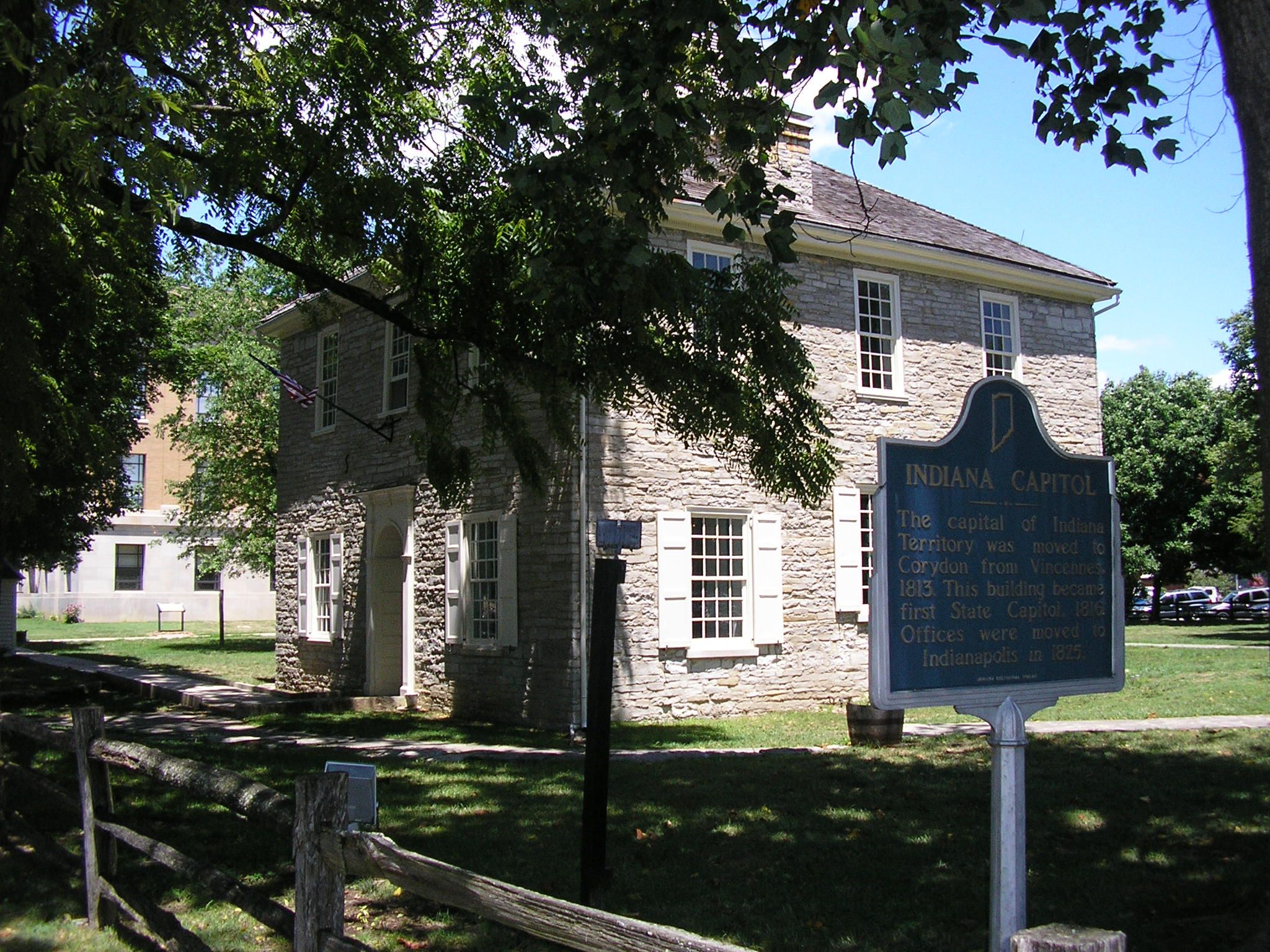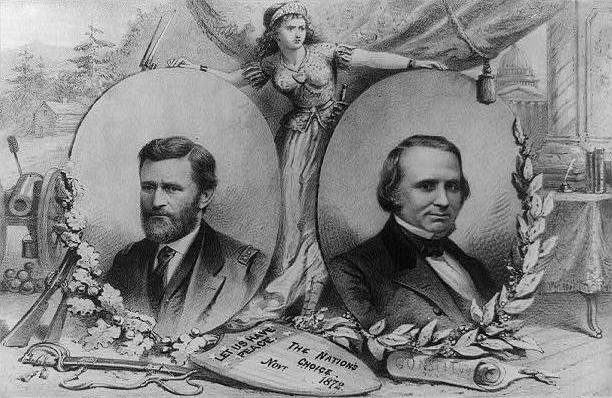|
James Sidney Hinton
James Sidney Hinton (December 25, 1834 – November 6, 1892) was a Civil War veteran and Republican politician, the first African American to hold state office in Indiana and the first African American to serve in the Indiana state legislature. Born in Raleigh, North Carolina to parents who were free people of color, he moved with them as a youth to Indiana. Hinton started working part-time as a barber while attending school. Later he became involved with politics and the Republican Party. A veteran of the American Civil War, he was commissioned as a lieutenant in the United States Colored Troops. He became active in postwar politics, serving as a trustee on the Wabash and Erie Canal, and in 1880 being elected to the State House. Early life and education Hinton was born in 1834 to John Cooper Hinton and Hannah Mitchell Hinton, free people of color in Raleigh, North Carolina. His father was a successful builder of skylights. In 1848 the family moved to Terre Haute, Indiana. The ... [...More Info...] [...Related Items...] OR: [Wikipedia] [Google] [Baidu] |
Marion County, Indiana
Marion County is located in the U.S. state of Indiana. The 2020 United States census, 2020 United States census reported a population of 977,203, making it the largest county in the state and 51st List of the most populous counties in the United States, most populated county in the country. Indianapolis is the county seat, the List of capitals in the United States, state capital, and List of United States cities by population, largest city. Marion County is Consolidated city–county, consolidated with Indianapolis through an arrangement known as Unigov. Marion County is the central county of the Indianapolis metropolitan area, Indianapolis–Carmel–Anderson Metropolitan Statistical Area, MSA in Central Indiana. Geography The low rolling hills of Marion County have been cleared of trees, and the area is completely devoted to municipal development or to agriculture, except for wooded drainages. The highest point (920 feet/279 meters ASL) is a small ridge at the county's northwe ... [...More Info...] [...Related Items...] OR: [Wikipedia] [Google] [Baidu] |
Greenville Settlement
Greenville is the name of several places: Canada * Laxgalts'ap, British Columbia, formerly named Greenville * Greenville, Nova Scotia, in Yarmouth County *Greenville Station, Nova Scotia, in Cumberland County * Lower Greenville, Nova Scotia, in Cumberland County United States *Greenville, Alabama *Greenville, California, in Plumas County *Greenville, Yuba County, California *Greenville, Delaware *Greenville, Florida *Greenville, Georgia *Greenville, Illinois ** Federal Correctional Institution, Greenville *Greenville, Indiana, in Floyd County * Greenville, Sullivan County, Indiana *Greenville, Wells County, Indiana *Greenville, Iowa *Greenville, Kentucky *Manchester, Kentucky, which was founded as Greenville *Greenville, Maine, a town ** Greenville (CDP), Maine, a census-designated place within the town *Greenville, Massachusetts *Greenville, Michigan *Greenville, Mississippi, ghost town known as "Old Greenville" in Jefferson County *Greenville, Mississippi, in Washington Coun ... [...More Info...] [...Related Items...] OR: [Wikipedia] [Google] [Baidu] |
Crown Hill Cemetery
Crown Hill Cemetery is a historic rural cemetery located at 700 West 38th Street in Indianapolis, Marion County, Indiana. The privately owned cemetery was established in 1863 at Strawberry Hill, whose summit was renamed "The Crown", a high point overlooking Indianapolis. It is approximately northwest of the city's center. Crown Hill was dedicated on June 1, 1864, and encompasses , making it the third largest non-governmental cemetery in the United States. Its grounds are based on the landscape designs of Pittsburgh landscape architect and cemetery superintendent John Chislett Sr and Prussian horticulturalist Adolph Strauch. In 1866, the U.S. government authorized a U.S. National Cemetery for Indianapolis. The Crown Hill National Cemetery is located in Sections 9 and 10. Crown Hill contains of paved road, over 150 species of trees and plants, over 225,000 graves, and services roughly 1,500 burials per year. Crown Hill is the final resting place for individuals from all walks ... [...More Info...] [...Related Items...] OR: [Wikipedia] [Google] [Baidu] |
Brazil, Indiana
Brazil is a city in Clay County, Indiana, United States. The population was 7,912 at the 2010 census. The city is the county seat of Clay County. It is part of the Terre Haute Metropolitan Statistical Area. The current chief executive of Brazil is Mayor Brian Wyndham (Democrat). History In the 1840s, the owners of the farm which would later originate the city of Brazil decided to name their farm after the country of Brazil, because that country was often the subject of news at the time. The city was founded in 1866 under the name of that farm. As of now, Brazil is a part of the Terre Haute Metropolitan Statistical Area. Clay county, which was formed in 1825, originally had Bowling Green as its county seat; the county seat was relocated to Brazil in 1876, following the city's incredible development. The Chafariz dos Contos (from " contos de réis", a former Brazilian currency) was given by the country of Brazil as a gift to the city, as a symbol of friendship, and was assembled ... [...More Info...] [...Related Items...] OR: [Wikipedia] [Google] [Baidu] |
Samuel A
Samuel ''Šəmūʾēl'', Tiberian: ''Šămūʾēl''; ar, شموئيل or صموئيل '; el, Σαμουήλ ''Samouḗl''; la, Samūēl is a figure who, in the narratives of the Hebrew Bible, plays a key role in the transition from the biblical judges to the United Kingdom of Israel under Saul, and again in the monarchy's transition from Saul to David. He is venerated as a prophet in Judaism, Christianity, and Islam. In addition to his role in the Hebrew scriptures, Samuel is mentioned in Jewish rabbinical literature, in the Christian New Testament, and in the second chapter of the Quran (although Islamic texts do not mention him by name). He is also treated in the fifth through seventh books of ''Antiquities of the Jews'', written by the Jewish scholar Josephus in the first century. He is first called "the Seer" in 1 Samuel 9:9. Biblical account Family Samuel's mother was Hannah and his father was Elkanah. Elkanah lived at Ramathaim in the district of Zuph. His genealog ... [...More Info...] [...Related Items...] OR: [Wikipedia] [Google] [Baidu] |
Indiana State House
The Indiana Statehouse is the List of state capitols in the United States, state capitol building of the U.S. state of Indiana. It houses the Indiana General Assembly, the office of the Governor of Indiana, the Indiana Supreme Court, and other state officials. The Statehouse is located in the capital city of Indianapolis at 200 West Washington Street (Indianapolis), Washington Street. Built in 1888, it is the fifth building to house the state government. The Corydon Historic District, first statehouse, located in Corydon, Indiana, is still standing and is maintained as a state historic site. The second building was the old Marion County courthouse which was demolished and replaced in the early 20th century. The third building was a structure modeled on the Parthenon, but was condemned in 1877 because of structural defects and razed so the current statehouse could be built on its location. History First Statehouse When Indiana became a state in 1816, the capital was located in ... [...More Info...] [...Related Items...] OR: [Wikipedia] [Google] [Baidu] |
1872 Republican National Convention
The 1872 Republican National Convention was held in Philadelphia, Pennsylvania, June 5–6, 1872. President Ulysses S. Grant was unanimously nominated for reelection by the convention's 752 delegates. Massachusetts Senator Henry Wilson replaced sitting Vice President Schuyler Colfax as the Republican vice presidential nominee. Presidential nomination Presidential candidate Image:Ulysses S Grant by Brady c1870-restored (3x4 crop).jpg, President Ulysses S. Grant of Illinois Vice President Colfax was considered a potential rival to Grant for the presidential nomination. Although Colfax declared himself open to the prospect should Grant decide not to run for a second term, his stance alienated him from both the President and his many supporters. Grant's nomination was co-seconded by William Henry Grey of Arkansas, the first African-American to address a major U.S. political party national convention. Grant received the nomination unanimously on the first ballot. Grant's re-nom ... [...More Info...] [...Related Items...] OR: [Wikipedia] [Google] [Baidu] |
Methodist Episcopal Church
The Methodist Episcopal Church (MEC) was the oldest and largest Methodist denomination in the United States from its founding in 1784 until 1939. It was also the first religious denomination in the US to organize itself on a national basis. In 1939, the MEC reunited with two breakaway Methodist denominations (the Methodist Protestant Church and the Methodist Episcopal Church, South) to form the Methodist Church. In 1968, the Methodist Church merged with the Evangelical United Brethren Church to form the United Methodist Church. The MEC's origins lie in the First Great Awakening when Methodism emerged as an evangelical revival movement within the Church of England that stressed the necessity of being born again and the possibility of attaining Christian perfection. By the 1760s, Methodism had spread to the Thirteen Colonies, and Methodist societies were formed under the oversight of John Wesley. As in England, American Methodists remained affiliated with the Church of Engl ... [...More Info...] [...Related Items...] OR: [Wikipedia] [Google] [Baidu] |
Indianapolis
Indianapolis (), colloquially known as Indy, is the state capital and most populous city of the U.S. state of Indiana and the seat of Marion County. According to the U.S. Census Bureau, the consolidated population of Indianapolis and Marion County was 977,203 in 2020. The "balance" population, which excludes semi-autonomous municipalities in Marion County, was 887,642. It is the 15th most populous city in the U.S., the third-most populous city in the Midwest, after Chicago and Columbus, Ohio, and the fourth-most populous state capital after Phoenix, Arizona, Austin, Texas, and Columbus. The Indianapolis metropolitan area is the 33rd most populous metropolitan statistical area in the U.S., with 2,111,040 residents. Its combined statistical area ranks 28th, with a population of 2,431,361. Indianapolis covers , making it the 18th largest city by land area in the U.S. Indigenous peoples inhabited the area dating to as early as 10,000 BC. In 1818, the Lenape relinquished their ... [...More Info...] [...Related Items...] OR: [Wikipedia] [Google] [Baidu] |
28th Indiana Infantry Regiment (Colored)
The 28th United States Colored Infantry, also called the 28th Indiana Infantry (Colored), 1 was an African American infantry regiment from the state of Indiana that fought in the American Civil War. History On November 30, 1863, the United States Department of War authorized Indiana Governor Oliver P. Morton to raise one regiment of infantry composed of African Americans. On December 3, the state's adjutant general issued orders to begin accepting enlistments, which began December 24. On January 12, 1864, the War Department notified Morton that the regiment would be called the "28th Regiment of U.S. Colored Troops." Reverend Willis Revels and Garland H. White, both ministers of the African Methodist Episcopal Church in Indianapolis, Indiana was the chief recruiting officer. Recruits trained until the end of March at a camp established on land owned by Calvin Fletcher, a prominent citizen. The camp was named "Camp Fremont" in honor of John C. Frémont, the 1856 Republican presi ... [...More Info...] [...Related Items...] OR: [Wikipedia] [Google] [Baidu] |
55th Massachusetts Infantry Regiment
The 55th Massachusetts Infantry Regiment was the sister regiment of the renowned Massachusetts 54th Volunteers during the latter half of the American Civil War. The enactment of the Emancipation Proclamation by United States President Abraham Lincoln on January 1, 1863 had opened the way for the enlistment of free men of color and newly liberated slaves to fight for their freedom within the Union Army. As the ranks of the 54th Massachusetts quickly reached its full complement of recruits, an overflow of colored volunteers continued to pour in from several other states outside Massachusetts-many of whom simply had not arrived in time-prompting Governor John Albion Andrew to authorize yet another regiment of colored soldiers sponsored by the Commonwealth. Lieutenant Colonel Norwood P. Hallowell of the 54th Massachusetts was promoted to colonel and appointed commander of the 55th Massachusetts on May 30, 1863. Five companies of the 55th Massachusetts were mustered into service on ... [...More Info...] [...Related Items...] OR: [Wikipedia] [Google] [Baidu] |
54th Massachusetts Infantry Regiment
The 54th Massachusetts Infantry Regiment was an infantry regiment that saw extensive service in the Union Army during the American Civil War. The unit was the second African-American regiment, following the 1st Kansas Colored Volunteer Infantry Regiment, organized in the northern states during the Civil War. Authorized by the Emancipation Proclamation, the regiment consisted of African-American enlisted men commanded by white officers. The unit began recruiting in February 1863 and trained at Camp Meigs on the outskirts of Boston, Massachusetts. Prominent abolitionists were active in recruitment efforts, including Frederick Douglass, whose two sons were among the first to enlist. Massachusetts Governor John Albion Andrew, who had long pressured the U.S. Department of War to begin recruiting African-Americans, placed a high priority on the formation of the 54th Massachusetts. Andrew appointed Robert Gould Shaw, the son of Boston abolitionists, to command the regiment as Colonel. ... [...More Info...] [...Related Items...] OR: [Wikipedia] [Google] [Baidu] |





_(14598130197).jpg)


